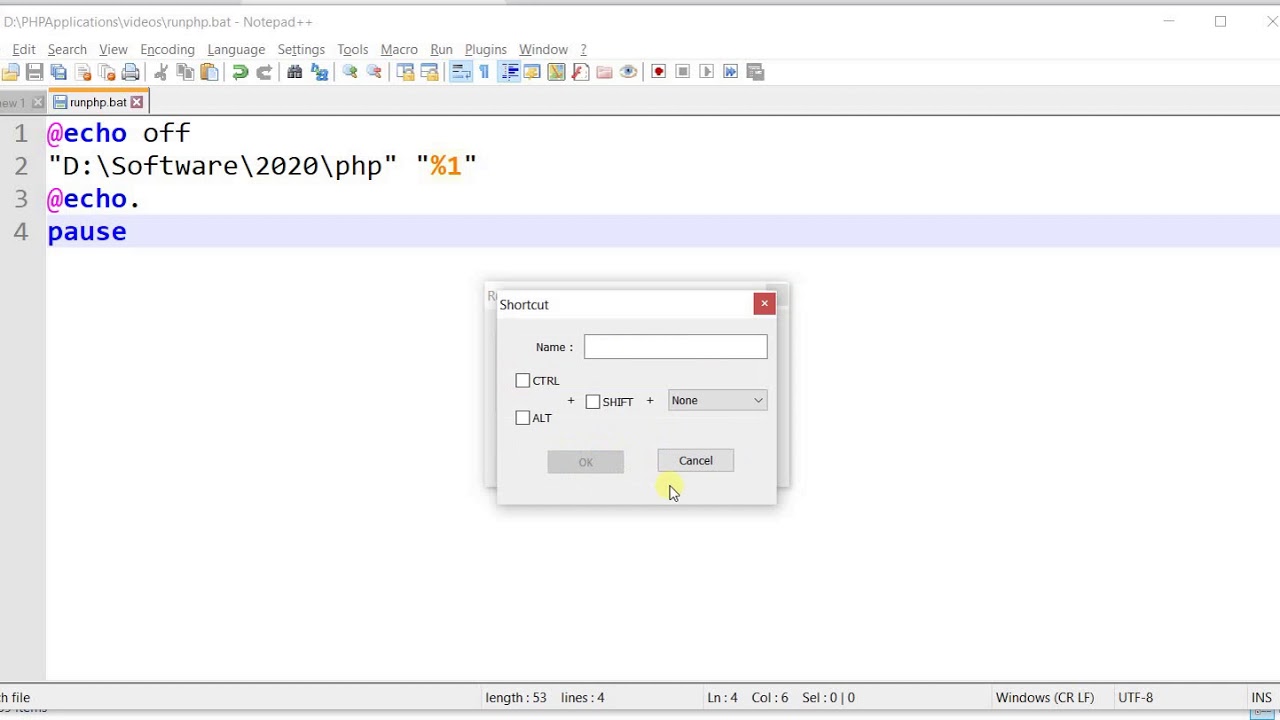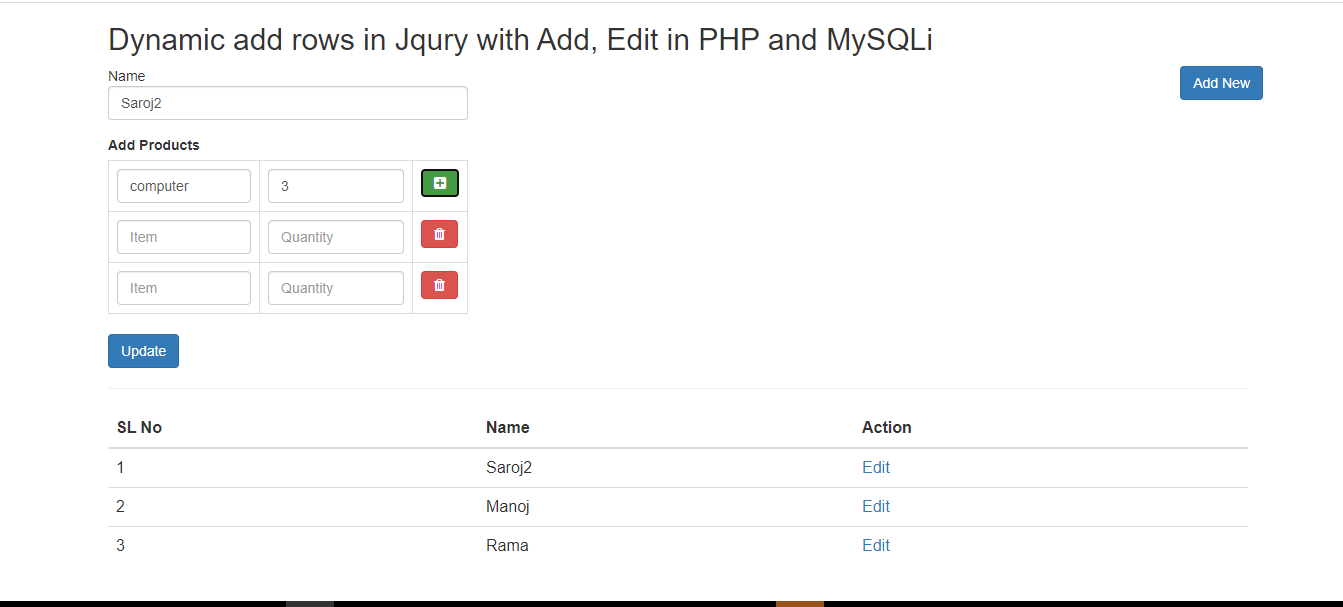Introduction
When it comes to searching for specific information in a database, a basic search might not always be sufficient. In such cases, an advanced search feature can come in handy, allowing users to search with more specific criteria and get more accurate results.
In this article, we will explore how to create an advanced search functionality using PHP. We will learn how to set up the necessary database structure, build the search form with input fields and dropdown menus, handle the form submission, perform the advanced search using SQL operators, and display the search results in a user-friendly manner.
By implementing an advanced search feature, you can greatly enhance the user experience on your website or application. Users will have the ability to refine their search queries and find exactly what they are looking for, saving time and frustration.
Whether you have an e-commerce site with a large product inventory, a blog with extensive article archives, or any other type of database-driven website, mastering the art of advanced search can be a game-changer. So, let’s dive in and learn how to make advanced search in PHP!
Setting up the Database
The first step in creating an advanced search functionality is to set up the necessary database structure. In this section, we will cover how to create the database and table that will store the data we want to search through.
To begin, we need to create a new database in our preferred database management system, such as MySQL or MariaDB. This can typically be done using a graphical user interface or through command-line tools.
Once the database is created, we can move on to creating the table that will hold the data. The structure of the table will depend on the specific data you are working with, but for demonstration purposes, let’s assume we have a table called “products” with columns for “id”, “name”, “description”, and “price”.
To create the “products” table, we can use SQL statements within our PHP code. Here’s an example:
html
CREATE TABLE products (
id int(11) NOT NULL AUTO_INCREMENT,
name varchar(100) NOT NULL,
description text,
price decimal(10,2) NOT NULL,
PRIMARY KEY (id)
) ENGINE=InnoDB DEFAULT CHARSET=utf8;
This SQL statement creates a table with the specified columns and data types. The “id” column is defined as an auto-incrementing integer, serving as the primary key. The “name” column is a varchar with a maximum length of 100 characters, the “description” column is a text field for longer text, and the “price” column is a decimal with 10 digits, including 2 decimal places.
With the database and table set up, we now have a foundation to work with for our advanced search functionality. In the next section, we will focus on building the search form, where users can input their search criteria.
Creating the Database
Before we can start building the advanced search functionality in PHP, we need to create a database to store the relevant information. In this section, we will cover the steps to create the necessary database.
The first step is to determine the type of database management system (DBMS) you want to use. Popular choices include MySQL, PostgreSQL, and SQLite. Once you have selected your preferred DBMS, you can proceed with creating the database.
To create a database, you can use a command-line interface, a graphical user interface (GUI) tool, or a database management tool like phpMyAdmin. Let’s see an example of creating a database using the MySQL command-line interface:
html
CREATE DATABASE mydatabase;
This command creates a database named “mydatabase”. You can replace “mydatabase” with your preferred name.
Once the database is created, you can verify its existence by listing the databases in your DBMS:
html
SHOW DATABASES;
You should see your newly created database in the list.
With the database created, you are now ready to proceed with creating the necessary tables and defining their structure to store your data. Depending on the requirements of your application, you can create multiple tables with appropriate columns to organize and relate the information effectively.
Creating a database is the first step towards building the advanced search functionality in PHP. In the next section, we will focus on creating the table, which will hold the specific data we want to search through.
Creating the Table
After creating the database, the next step in building the advanced search functionality in PHP is to create the table that will hold the data we want to search through. In this section, we will cover the process of creating a table.
The structure of the table will depend on the specific data you want to store and search. Let’s consider an example where we want to create a table named “products” to store information about different products. Each product may have attributes such as “id”, “name”, “description”, and “price”.
To create the “products” table, you can use SQL statements within your PHP code or a database management tool like phpMyAdmin. Here’s an example of creating the table with the required columns:
html
CREATE TABLE products (
id INT PRIMARY KEY AUTO_INCREMENT,
name VARCHAR(100) NOT NULL,
description TEXT,
price DECIMAL(10, 2) NOT NULL
);
In this example, the “id” column is defined as an integer and serves as the primary key with auto-increment enabled. The “name” column is a varchar with a maximum length of 100 characters. The “description” column is of type text, allowing for longer descriptions. The “price” column is a decimal with a precision of 10 digits and a scale of 2, indicating two decimal places.
You can adjust the data types and sizes according to your specific requirements.
Once the table is created, you can verify its existence using SQL commands or GUI tools. For example, you can list all the tables in the database using the following SQL command:
html
SHOW TABLES;
You should see the “products” table in the list.
With the table created, you have now successfully set up the structure to store the data for the advanced search functionality. In the next sections, we will focus on building the search form and handling the form submission.
Building the Form
Once we have set up the database and table structure, the next step in creating the advanced search functionality in PHP is to build the search form. The search form will provide users with input fields and options to specify their search criteria. In this section, we will cover the process of building the search form.
To begin, let’s create an HTML form that will serve as the foundation for our search functionality. We can use the `
In this form, we have a single input field of type “text” with the name “search”. Users can enter their search query in this field. We have also included a submit button to trigger the form submission.
For advanced search functionality, we can add additional input fields to capture more specific search criteria. For example, if we are searching for products, we can include input fields for “minimum price” and “maximum price”. We can also add dropdown menus to select specific categories or other search filters.
Once the form is submitted, it will send the search criteria to a PHP script for processing. In the next section, we will cover how to handle the form submission and retrieve the search criteria in PHP.
Creating Input Fields for Search Criteria
When building the advanced search functionality in PHP, it’s important to provide users with input fields that capture their search criteria accurately. In this section, we will focus on creating the input fields for the search criteria.
The input fields will depend on the specific search criteria you want to offer to your users. Let’s consider an example where we want users to be able to search for products based on their name, price range, and category.
To create input fields for search criteria, we can modify the HTML form we created earlier. Here’s an example of how the form can be expanded to include additional input fields:
html
In this example, we have added two input fields of type “number” for the minimum and maximum price criteria. Users can enter the desired price range in these fields. We have also included a `` and `
html
In this example, we have added a dropdown menu for the product’s category and availability. The “category” `` element provides options for selecting whether the product is in stock or out of stock.
The value attributes of the `
With the advanced search options added to the search form, users can now refine their search criteria by selecting the desired category and availability. In the next section, we will focus on handling the form submission and retrieving the search criteria in PHP.
Handling the Form Submission
After the user submits the search form, the next step in building the advanced search functionality in PHP is to handle the form submission and retrieve the search criteria. In this section, we will cover the process of handling the form submission and retrieving the search criteria in PHP.
When the user clicks the “Search” button, the form will be submitted to a PHP script specified in the form’s “action” attribute. This script will receive the submitted form data and process it to perform the search based on the provided criteria.
In the PHP script that handles the form submission, we can access the form data using the $_GET or $_POST superglobal array, depending on the method specified in the form’s “method” attribute. In this example, we are using the GET method, so we will use the $_GET array to retrieve the search criteria.
Let’s assume the PHP script is named “search.php” and is located in the same directory as the form. Here’s an example of how we can handle the form submission and retrieve the search criteria:
php
In this example, we retrieve the search criteria using the appropriate array keys from the $_GET array. The search query, minimum price, maximum price, category, and availability are stored in variables for further processing.
Once the search criteria are retrieved, you can use them to construct the appropriate SQL query to fetch the desired results from the database. Additionally, you can apply any necessary filtering and sorting based on the search criteria.
In the next sections, we will cover how to perform the advanced search using SQL operators and display the search results in a user-friendly manner.
Retrieving Search Criteria from the Form
After the user submits the search form, the search criteria entered by the user need to be retrieved and processed for further use. In this section, we will focus on retrieving the search criteria from the form in PHP.
When the form is submitted, the form data is sent to the server via either the GET or POST method, as specified in the form’s “method” attribute. In the PHP script that handles the form submission, we can access the form data using the corresponding superglobal array, $_GET or $_POST.
Assuming that the search form has been submitted using the GET method, we can retrieve the search criteria from the URL parameters using the $_GET superglobal array. Here’s an example:
php
In this example, we retrieve the search criteria by accessing the corresponding array elements of $_GET, using the name attribute of the form elements as the array keys. For example, $_GET[‘search’] retrieves the value of the “search” input field, $_GET[‘min_price’] retrieves the value of the “min_price” input field, and so on.
You can assign the retrieved search criteria to variables for further processing. These variables can be used to construct the SQL query, perform database operations, or apply any necessary filtering and sorting to fetch the desired search results.
Remember to handle any input validation or data sanitization to ensure the security and integrity of the search criteria before using them in your application.
In the next section, we will explore how to build the SQL query using the retrieved search criteria in order to perform the advanced search.
Building the SQL Query
Once the search criteria are retrieved from the form, the next step is to construct the SQL query that will perform the advanced search based on those criteria. In this section, we will focus on building the SQL query dynamically in PHP.
The SQL query will depend on the specific structure of your database table and the search criteria you want to apply. Let’s continue with our example of a product search, where users can search for products based on their name, price range, category, and availability.
Here’s an example of how we can build the SQL query based on the retrieved search criteria:
php
= $minPrice”; // Add minimum price condition
}
if (!empty($maxPrice)) {
$sql .= ” AND price <= $maxPrice"; // Add maximum price condition
}
if (!empty($category)) {
$sql .= " AND category = '$category'"; // Add category condition
}
if (!empty($availability)) {
$sql .= " AND availability = '$availability'"; // Add availability condition
}
// Further process the SQL query or execute it on the database
// ...
?>
In this example, we start with a basic SQL query and use string concatenation to dynamically add conditions based on the search criteria retrieved from the form. The conditions are added to the query for each non-empty search criteria, using appropriate SQL operators like LIKE, >=, and <=.
You can customize the SQL query and conditions based on your specific requirements and database structure. Remember to properly handle and sanitize the input values to prevent SQL injection vulnerabilities.
Once the SQL query is built, you can further process it, execute it on the database using a database connection, and retrieve the search results. In the next section, we will focus on performing the advanced search and displaying the search results.
Performing Advanced Search
With the SQL query constructed, the next step in implementing the advanced search functionality is to execute the query and perform the search. In this section, we will focus on performing the advanced search using the constructed SQL query in PHP.
Assuming you have established a connection to your database and stored the constructed SQL query in a variable named `$sql`, you can execute the query using the appropriate database functions or libraries in PHP.
Here’s an example of how to execute the SQL query and retrieve the search results:
php
0) {
// Fetch and process search results
while ($row = mysqli_fetch_assoc($result)) {
// Process each search result
// …
}
} else {
// No results found
// Display appropriate message to the user
}
} else {
// Query execution failed
// Handle the error appropriately
}
?>
In this example, we use the `mysqli_query()` function to execute the SQL query and store the result set in the `$result` variable. We then check if any results were found using the `mysqli_num_rows()` function. If there are results, we can use a loop to fetch and process each row of the result set.
Within the loop, you can access the retrieved data for each search result using the associative array `$row`. You can manipulate and display the search results as needed, such as echoing them out or building a dynamic HTML structure.
If no results are found, you can display an appropriate message to the user indicating that no matching records were found.
It is important to handle any potential errors that may occur during the execution of the SQL query and result processing. Proper error handling will help you identify and resolve any issues that may arise during the search process.
By performing the advanced search and displaying the search results, you are providing users with the ability to find specific information that meets their criteria. In the next section, we will cover how to format and present the search results in a user-friendly manner.
Using LIKE Operator for Partial Matches
When implementing an advanced search functionality, it is common to allow users to perform partial matches on their search queries. The LIKE operator in SQL is a powerful tool for such searches. In this section, we will focus on using the LIKE operator for partial matches in PHP.
The LIKE operator allows you to search for patterns within the values of database columns. It supports the use of wildcard characters, such as ‘%’ (percent symbol) and ‘_’ (underscore), to represent unknown or variable parts of the search term.
Let’s consider an example where users can search for products based on their name. To enable partial matches, we can modify the SQL query to utilize the LIKE operator. Here’s an example:
php
In this example, we retrieve the search query from the form and use it in the SQL query by appending the LIKE operator to the condition. The ‘%’ wildcard characters are added before and after the search query to match any substring within the “name” column values.
For instance, if a user searches for “apple”, the SQL query will search for any product names that contain the word “apple” anywhere in the name, such as “Red Apple” or “Apple Pie”. The wildcard characters allow for flexibility in searching.
Remember to properly sanitize and validate user input to prevent any potential security vulnerabilities, such as SQL injection attacks.
By utilizing the LIKE operator, you enable users to perform partial matches and improve the search functionality of your application. In the next section, we will cover the usage of AND and OR operators to combine multiple search criteria.
Using AND and OR Operators to Combine Search Criteria
When implementing advanced search functionality, it is often necessary to combine multiple search criteria to retrieve more specific and accurate results. The SQL AND and OR operators are useful for this purpose. In this section, we will focus on using the AND and OR operators to combine search criteria in PHP.
The AND operator is used to retrieve records that satisfy all specified conditions, while the OR operator is used to retrieve records that satisfy at least one of the specified conditions.
Let’s consider an example where users can search for products based on the product name, category, and availability. We want to retrieve products that match all the specified criteria. Here’s an example of how we can build the SQL query using the AND and OR operators:
php
In this example, we check each search criterion individually and append the corresponding conditions to the SQL query. The AND operator is used to combine multiple conditions within the IF statements, ensuring that all specified conditions must be satisfied for a record to be included in the search results.
In addition, the OR operator is used to specify that the availability can match either the selected availability option or a special value of ‘both’. This allows for more flexibility in the search, accommodating products that are available in multiple states.
By utilizing the AND and OR operators, you can create complex search conditions and retrieve specific records that meet all or at least one of the specified criteria. This helps users to narrow down their search and obtain more targeted results.
In the next section, we will cover the process of displaying the search results and formatting them in a user-friendly manner.
Displaying the Search Results
Once the search has been performed and the results have been retrieved, the next step is to display those results in a user-friendly manner. In this section, we will focus on how to display the search results in PHP.
Assuming you have retrieved the search results from the database and stored them in a variable, such as `$searchResults`, you can loop through the results and format them for display.
Here’s an example of how you can display the search results:
php
“;
echo “
” . $result[‘name’] . “
“; // Display the product name
echo “
Price: $” . $result[‘price’] . “
“; // Display the product price
echo “
Description: ” . $result[‘description’] . “
“; // Display the product description
echo “

























